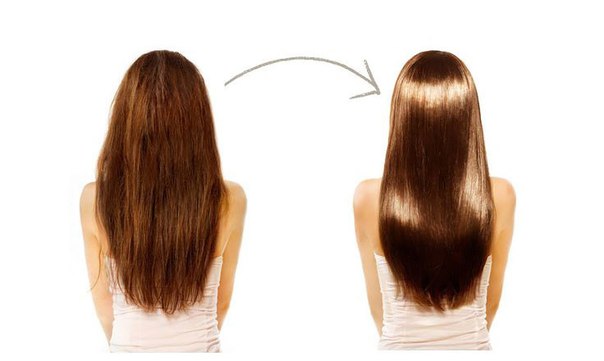
Everyone wants strong, healthy, voluminous, and silky-smooth tresses. To make this happen, it becomes necessary to walk that extra mile for your hair and provide the nutrition it deserves. Keratin and protein hair treatments are popular in-salon treatments that help to combat frizz and benefit with healthier hair. Talking of their popularity, protein hair treatments have taken the limelight, stressing on hair growth and wholesome rejuvenation.
With different properties and benefits, keratin and protein treatments give your hair the nourishment it needs. They can be used together to improve the health and appearance of your mane, or even stand alone. Now, the question arises – “Which is right for your hair?” In this blog, let’s stitch everything about the two hair treatments and how they individually and together benefit your hair.
Keratin Treatment – What is it & Who needs it
Keratin hair treatment is a hair smoothening procedure that eliminates frizz and seals hair cuticles, adding shine and luster to the lengths. It reduces the impact of external aggressors and helps increase the longevity of hair colors. Overtime, the natural keratin protein depletes from your hair leaving gaps that weaken the strands. Hence, the treatment replenishes the lost keratin resulting in smoother and frizz-free hair. After the application of the keratin solution, it is sealed to the strands with heat treating using a flat iron. The process decreases hair drying time and makes it look glossy and full.
Almost everybody is a good candidate for keratin hair treatment. Ranging from dry & curly hair to parched & wavy tresses, every hair type needs keratin. It is a type of protein that forms the essential outer layer ensuring better manageability and protection from dust, dirt, and grime. Mainly, it provides structure and strength to the hair, preventing heat damage and breakage. Being one of the protein hair treatments, it reduces dryness and prevents split ends. After tapping experts to get the inside scoop on this procedure, the following hair types seem to draw benefits from keratin treatment. You can consider keratin treatment if your:
- Hair takes a long time to straighten even after using the best straighteners.
- Hair has been under the “chemical pressure” of colors and styling products.
- Hair is exposed to humidity and other environmental aggressors.
- Hair is prone to constant breakage and appears frizzy.
Protein Treatment – What is it & who’s the best candidate
We all have been a part of the buzz that says protein is the food for your hair, enhancing its silky-smooth texture. It’s true! Whether bleaching or styling, brushing roughly, or using insensitive products, our mistakes of challenging our hair condition make us eligible for this treatment. Protein hair treatments give excellent results and enhance the texture of your hair. The treatment is enriched with a range of proteins and vitamins. that works on adding essential nutrients. As a result, it improves overall hair strength, density, and elasticity.
But why should you invest in it? Unlike keratin hair treatment, a wholesome protein treatment makes your hair ready for the challenges you may give it. It strengthens and repairs damaged hair by replenishing proteins lost through chemical exposure and heat styling. Keratin, collagen, and wheat protein, along with other conditioning agents combine to make the process a big hit. The procedure resurfaces the protein bonds in your strands, filling in the gaps and holes in the damaged hair cuticles. It drops the chance of split ends and further breakage, improving hair elasticity and protecting against damage. Look out for a staunch protein-based hair treatment if your:
- Hair feels sticky/gummy or has gaps and tears easily.
- Hair is hard to curl or straighten.
- Hair is stringy, limp, flat, or has visibly changed in texture.
- Hair is experiencing extreme heat damage.
- Hair is prone to breakage and split ends.
The Ultimate Comparison – Keratin vs. Protein Treatments
Both being popular enough to be chased, keratin and protein treatments have paved the way for healthy hair from the inside out. The keratin hair treatment is part of a protein-based treatment that promises to restore the sheen and beauty of the mane. So what’s the difference? Let’s find out.
Duration
The Keratin hair treatment process takes almost 2-3 hours. Mainly, it depends on the volume of the hair being treated and the formula used. On the other hand, the components of protein treatment generally take 20-40 minutes to soak into the follicles.
Maintenance
After keratin treatment, one must not wash hair for up to 72 hours. This helps the components of the product to penetrate through the strands and work their magic. Inversely, you can follow up a protein treatment with deep conditioning, ensuring even dilution of protein in the follicles.
Expectation
Keratin treatment, when taken good care of, can visibly last for up to 5-6 months. However, you may need to repeat protein-based hair treatment every 4-6 weeks, depending on your hair type and requirements.
While both keratin and protein treatments aim to improve the condition of the hair, protein hair treatments focus on strengthening and repairing coarse strands while keratin treatments primarily target frizz reduction and smoothing. Keratin treatments add a layer to your hair that doesn’t let the environmental aggressor affect their porosity, strength, and pH. All in all, both processes seem to nourish your strands with the needed nutrients, making your hair look gorgeous, silky, smooth, and healthy.
Still confused? Take an experiment to determine if your hair needs keratin or protein at all. Prick a hair strand from your regular comb or brush. Try to stretch it gently. If it feels extra gummy or stretchy and you see more strands falling out than usual, your hair needs protein, including keratin.
Write and Win: Participate in Creative writing Contest & International Essay Contest and win fabulous prizes.

